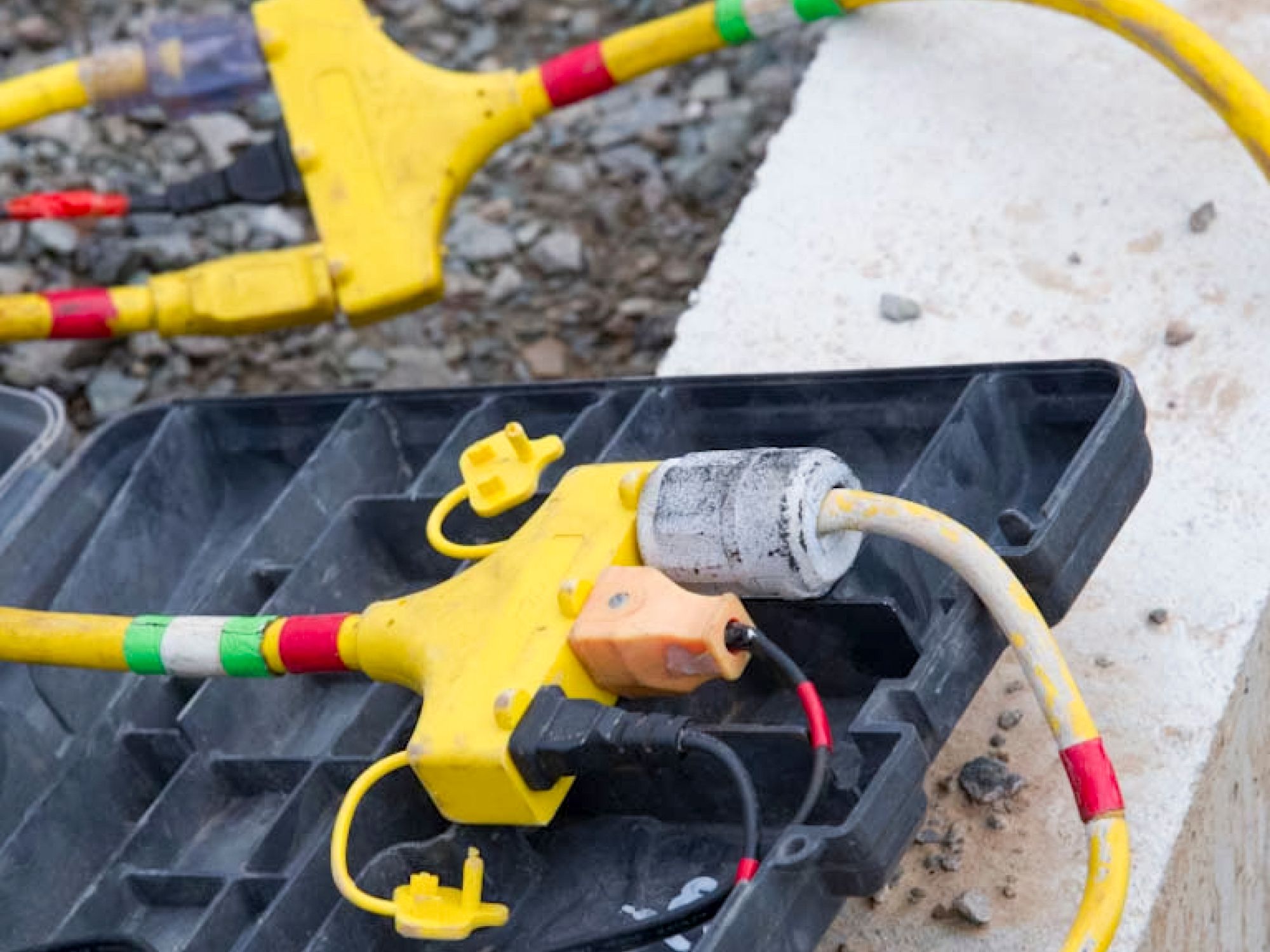What is the employer’s responsibility for ground-fault protection?

- OSHA requires ground-fault protection either through GFCIs or an assured equipment grounding conductor program.
The Occupational Safety and Health Administration (OSHA)’s ground-fault protection rules and regulations have been determined necessary and appropriate for employee safety and health. Therefore, it is the employer’s responsibility to provide either:
- Ground-fault circuit interrupters (GFCIs) on construction sites for receptacle outlets in use and not part of the permanent wiring of the building or structure; or
- A scheduled and recorded assured equipment grounding conductor program on construction sites, covering all cord sets, receptacles which are not part of the permanent wiring of the building or structure, and equipment connected by cord and plug which are available for use or used by employees.
When should employers provide GFCIs?
The employer is required to provide ground-fault circuit interrupters for all 120-volt, single phase, 15- and 20 -ampere receptacle outlets on construction sites which are not a part of the permanent wiring of the building or structure and which are in use by employees. Receptacles on the ends of extension cords are not part of the permanent wiring and, therefore, must be protected by GFCIs whether or not the extension cord is plugged into permanent wiring.
These GFCIs monitor the current-to-the-load for leakage to ground. When this leakage exceeds 5 mA plus or minus 1 mA, the GFCI interrupts the current. They are rated to trip quickly enough to prevent electrocution. This protection is required in addition to, not as a substitute for, the grounding requirements of OSHA’s safety and health rules and regulations (1926).
The requirements which the employer must meet when using the GFCI option are stated in 1926.404(b)(1)(ii).
When should employers use an assured equipment grounding conductor program?
An assured equipment grounding conductor program covers all cord sets, receptacles which are not a part of the permanent wiring of the building or structure, and equipment connected by cord and plug which are available for use or used by employees. The requirements which the program must meet are stated in 1926.404(b)(1)(iii), but employers may provide additional tests or procedures.
OSHA requires that a written description of the employer’s assured equipment grounding conductor program, including the specific procedures adopted, be kept at the jobsite. This program should outline the employer’s specific procedures for the required equipment inspections, tests, and test schedule.
The required tests must be recorded. This record must be kept by means of logs, color coding, or other effective means and must be maintained until replaced by a more current record. The written program description and the recorded tests must be made available, at the jobsite , to OSHA and to any affected employee upon request. The employer is required to designate one or more competent persons to implement the program.
Electrical equipment noted in the assured equipment grounding conductor program must be visually inspected for damage or defects before each day’s use. Any damaged or defective equipment must not be used by the employee until repaired.
Two tests are required by OSHA. One is a continuity test to ensure that the equipment grounding conductor is electrically continuous. It must be performed on all cord sets, receptacles which are not part of the permanent wiring of the building or structure, and on cord- and plug-connected equipment which are required to be grounded. This test may be performed using a simple continuity tester, such as a lamp and battery, a bell and battery, an ohmmeter, or a receptacle tester.
The other test must be performed on receptacles and plugs to ensure that the equipment grounding conductor is connected to its proper terminal. This test can be performed with the same equipment used in the first test.
These tests are required before first use, after any repairs, after damage is suspected to have occurred, and at three-month intervals. Cord sets and receptacles which are essentially fixed and not exposed to damage must be tested at six-month intervals. Any equipment which fails to pass the required tests shall not be made available for or used by employees.
